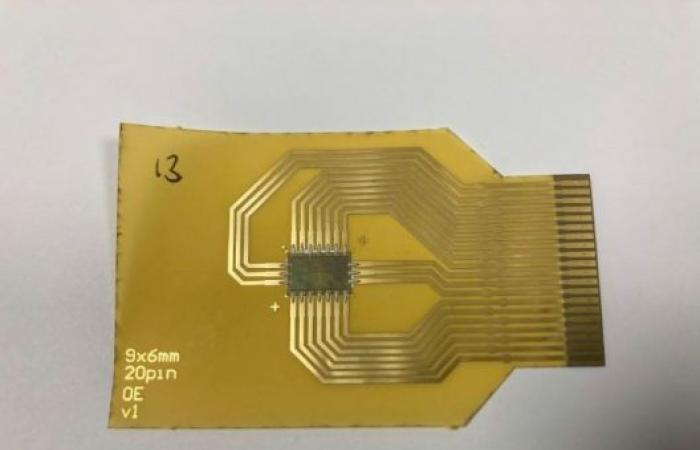The newly developed Flex-RV microprocessor, manufactured with flexible IGZO TFTs and based on RISC-V architecture, operates at 60 kHz with a power consumption of less than 6 mW. Its foldability and low-cost design make it ideal for wearables, healthcare devices and smart sensors.
Researchers have developed Flex-RV, a game-changing flexible microprocessor based on the RISC-V processor and manufactured with indium gallium zinc oxide (IGZO) thin film transistors (TFTs). This machine outperforms conventional silicon-based semiconductors (literally) – and here we have a sub-dollar solution for low-power foldable computing.
Flex-RV operates at 60 kHz with a power consumption of less than 6 mW, exhibiting only a 4.3% performance variation, even under tight bending conditions, thanks to its flexible polyimide substrate. Polyimide is specifically used as a substrate in this use case due to its excellent thermal stability, high mechanical strength and chemical resistance.
The processor integrates a programmable machine learning (ML) machine learning system, capable of executing ML workloads through custom RISC-V instructions. This feature supports on-chip AI calculations, meaning Flex-RV could be ideal for emerging applications such as healthcare wearables, smart packaging, and fast-moving consumer goods, especially where the Cost-effectiveness and form factor are essential. Computing requirements in these industries are typically low, and Flex-RV meets these demands while providing flexibility and durability.
The manufacturing process, which relies on IGZO TFTs, significantly reduces environmental impact compared to silicon-based counterparts, especially in submicron dimensions. Additionally, the over-edge printing (OEP) assembly method ensures that the Flex-RV chip can be mounted on flexible printed circuit boards (FlexPCBs) and maintains its operational integrity during mechanical stress testing, withstanding a bend radius of 3mm – which is quite significant for a component of this size.
Given its very low cost, flexible design and ML reach, Flex-RV could become widespread in the future – a vital technology for next-generation wearable electronics, implantable medical devices, and smart sensors.


Translator: Ninh Ngoc Duy – Editorial Assistant – 439432 articles published on Notebookcheck since 2008









